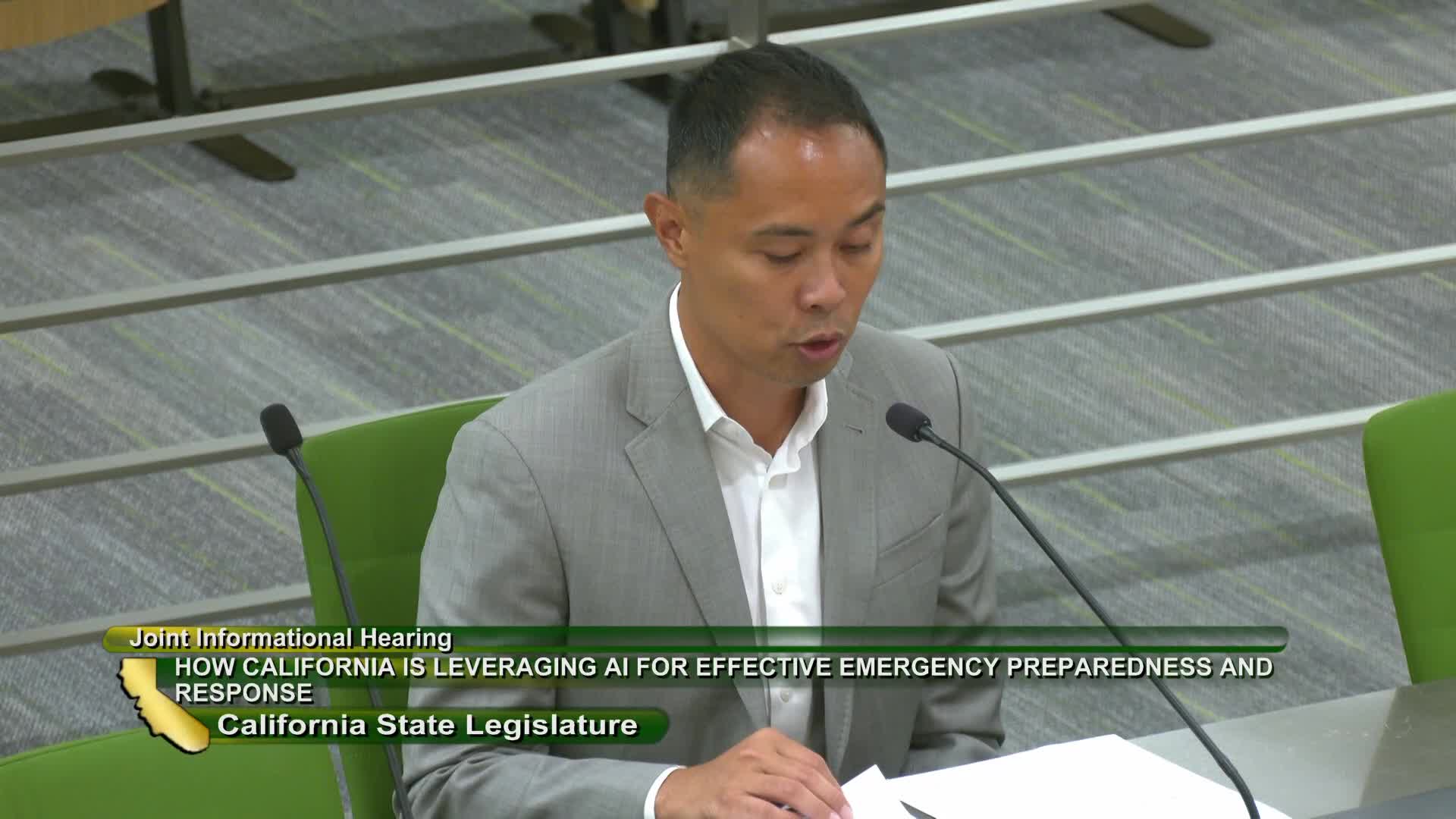Google harnesses AI to revolutionize emergency response efforts
August 29, 2024 | Governmental Organization, Standing Committees, California State Senate, Senate, Legislative, California
This article was created by AI summarizing key points discussed. AI makes mistakes, so for full details and context, please refer to the video of the full meeting. Please report any errors so we can fix them. Report an error »

In a recent government meeting, representatives from Google outlined their ongoing efforts to enhance emergency management through artificial intelligence (AI) and advanced technology. The discussion highlighted the importance of rapid response and efficient resource allocation during crises, emphasizing how these tools can minimize damage and save lives.
Google is collaborating with emergency management agencies and non-profit organizations to develop AI-powered tools that streamline crisis response. Their SOS alerts, integrated with Google Search and Maps, provide critical information such as evacuation routes, shelter locations, and relevant news updates during emergencies. The use of machine learning algorithms allows for real-time analysis of traffic, infrastructure damage, and resource availability, enabling the identification of optimal routes for emergency vehicles and effective personnel allocation.
Effective communication during a crisis is crucial, and Google’s public alert systems aim to deliver timely and accurate alerts to affected individuals. Additionally, Google Cloud's natural language processing capabilities are being utilized to analyze social media data and news articles, helping to identify emerging trends and combat misinformation.
The meeting also addressed the challenges communities face in the aftermath of disasters. Google is committed to supporting long-term recovery efforts through AI tools that provide centralized information on donation and volunteer opportunities, as well as recovery guidance. Their technology is being used to analyze satellite imagery and geospatial data to assess damage and prioritize recovery efforts, which can assist governments and NGOs in resource allocation and identifying vulnerable populations.
The representatives emphasized their commitment to using AI for good, particularly in emergency management, and the importance of building trust with users. By investing in research and collaborating with partners, Google aims to improve early warning systems, optimize response efforts, and support long-term recovery, ultimately enhancing public safety and resilience against natural disasters.
The meeting concluded with an invitation for questions from committee members, indicating ongoing engagement and collaboration in this critical area of public safety.
Google is collaborating with emergency management agencies and non-profit organizations to develop AI-powered tools that streamline crisis response. Their SOS alerts, integrated with Google Search and Maps, provide critical information such as evacuation routes, shelter locations, and relevant news updates during emergencies. The use of machine learning algorithms allows for real-time analysis of traffic, infrastructure damage, and resource availability, enabling the identification of optimal routes for emergency vehicles and effective personnel allocation.
Effective communication during a crisis is crucial, and Google’s public alert systems aim to deliver timely and accurate alerts to affected individuals. Additionally, Google Cloud's natural language processing capabilities are being utilized to analyze social media data and news articles, helping to identify emerging trends and combat misinformation.
The meeting also addressed the challenges communities face in the aftermath of disasters. Google is committed to supporting long-term recovery efforts through AI tools that provide centralized information on donation and volunteer opportunities, as well as recovery guidance. Their technology is being used to analyze satellite imagery and geospatial data to assess damage and prioritize recovery efforts, which can assist governments and NGOs in resource allocation and identifying vulnerable populations.
The representatives emphasized their commitment to using AI for good, particularly in emergency management, and the importance of building trust with users. By investing in research and collaborating with partners, Google aims to improve early warning systems, optimize response efforts, and support long-term recovery, ultimately enhancing public safety and resilience against natural disasters.
The meeting concluded with an invitation for questions from committee members, indicating ongoing engagement and collaboration in this critical area of public safety.
View full meeting
This article is based on a recent meeting—watch the full video and explore the complete transcript for deeper insights into the discussion.
View full meeting
